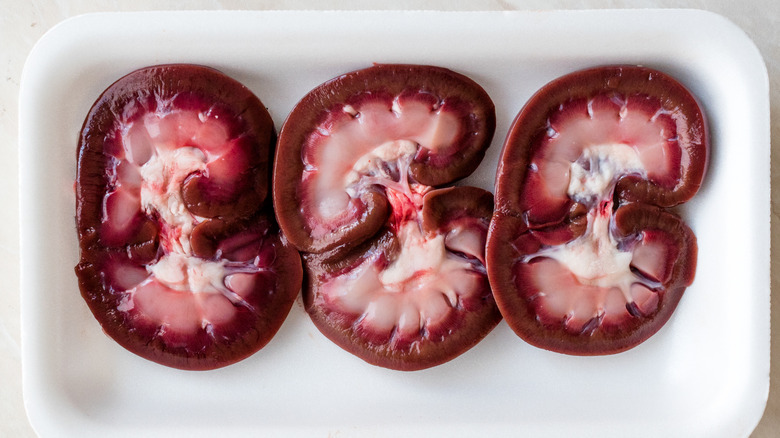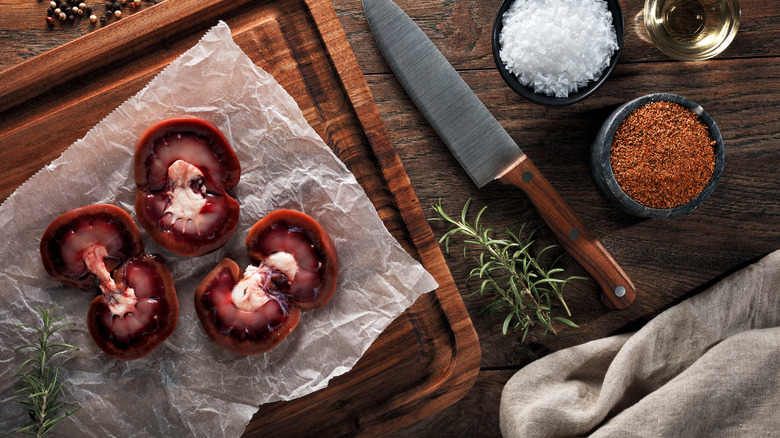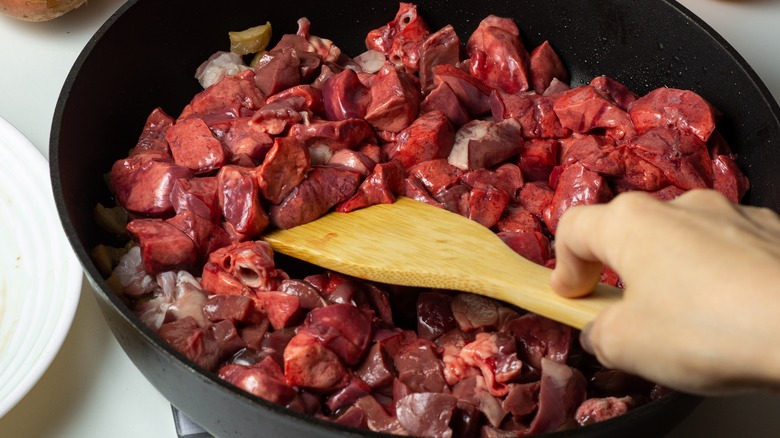How To Make Lamb Kidneys Tasty For Even The Most Hesitant Foodies
Lamb is often considered a "high-end" protein choice, saved for special occasions and holidays such as Christmas or Easter. A leg of lamb or a roasted rack on the table makes a stunning centerpiece to a meal, and a chop or a shank might be featured on the menu at your favorite upscale restaurant. But what about the softer, more internal bits of the animal that often go unnoticed and unused, such as the kidneys?
Why eat the kidneys in the first place? You might be surprised to hear that animal organs are packed with nutrition. Just 50 grams of lamb kidney offers 38% of your daily protein needs; it also provides omega-3 fatty acids, vitamin B12, and more. And eating nose-to-tail is in vogue these days; some popular chefs have even made their names cooking it. It saves waste, and organ meats are often a cheaper cut than prime pieces, such as legs and ribs.
But despite these advantages, many can't get over the gamey flavor that clings to organ meats. Luckily, there are easy ways to negate the organ-y aftertaste and make preparing kidneys at home a breeze, starting with trimming the kidneys.
Brine and trim for a milder kidney taste
Kidneys are a filter organ, so their natural flavor tends is particularly strong. One easy way to mute that is by soaking the kidneys before cooking. Use milk, buttermilk, or a brine of salt and water (or vinegar and water) to draw out the bitter flavor. No need to leave them overnight — one to two hours is enough.
Make sure the kidneys have been trimmed properly for best results. Any white fat around the exterior should be removed, as well as the shiny membrane that covers each one. Inside each kidney is a white core that must be carved out, either using kitchen shears or a sharp paring knife. Leaving in the connective tissue may cause chewiness depending on your cooking method, so trim thoroughly for the best possible results.
If all of that seems intimidating, you can always ask to have your kidneys trimmed at the butcher counter. However, the best results typically come from kidneys that are prepared and trimmed fully at home.
Add the right flavors for success
Finally, it's time to cook. Many kidney preparations either leave the organs seared and pink on the inside, or braised low and slow. Whichever your preference, the final step is to decide which flavors will supplement your meat — a choice that can take the dish from simply tolerable to utterly delectable.
Classic kidney recipes include deviled kidney and steak and kidney pie, two preparations using lots of rich gravy, mushrooms, and potent add-ins, such as Worcestershire sauce or bouillon. Many also prefer their kidneys spicy, with heavy dashes of cayenne pepper and paprika in the sauce. You can also mix spices into flour, then dredge the kidney pieces in the seasoned flour before pan-frying them in butter.
However you choose to flavor your kidneys, know that even after brining, these organs can stand up against strong flavors, including red wine, mustard, and more. Bon appétit.


